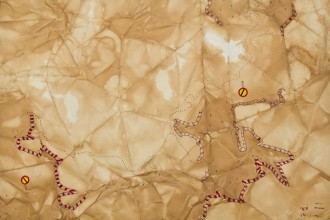By Michael Dodd
The hope at the dawn of the year 2000, the careful optimism that humanity could leave its bloodiest century behind was dashed on September 11th 2001. Since then this new century has been characterised by fear, and the country directly targeted by terrorist actions that day has felt this fear acutely. As demonstrated in the first part of the series, the American horror film has been consistent in its interpretation, exploitation and examination of the fears of American society. But is it possible that the modern terror which has gripped America has stunted this cinematic trait? Has the post-9/11 United States left the American horror movie behind?
 It is important to consider why the events of that day resonated so profoundly not just in the United States but all over the world. The horrifying fact is that 9/11 was a horror movie, a real life horror movie, and that is exactly how the attackers wanted it. For the vast majority of us the experience of that day was one of being glued to the television screen, shocked, disbelieving and ultimately frightened, but unable to tear ourselves away from what was happening before our eyes.
It is important to consider why the events of that day resonated so profoundly not just in the United States but all over the world. The horrifying fact is that 9/11 was a horror movie, a real life horror movie, and that is exactly how the attackers wanted it. For the vast majority of us the experience of that day was one of being glued to the television screen, shocked, disbelieving and ultimately frightened, but unable to tear ourselves away from what was happening before our eyes.
Every facet of the attack was designed to symbolise American utilities being turned against America. Their own planes crashed into their own buildings, and on a deeper level a grotesque artistry. The 9/11 attackers committed an atrocity which had its blueprint in Hollywood. The huge explosions, the destruction, the devastation, it all echoed works like The Towering Inferno and Independence Day. The setting for the most widely seen of the terrorist acts that day? The city which had for years been a default location for on screen cataclysm: New York.
In the immediate aftermath there was a realisation too awful to comprehend: American film had played a part in the barbarity. It had laid out the choreography for the attackers to make the most momentous on-screen impact that they could.
“The movies set the pattern, and these people have copied the movies… Nobody would have thought to commit an atrocity like that… unless they’d seen it in a movie… How dare we continue to show this kind of mass destruction in movies?… I just believe we created this atmosphere and taught them how to do itâ€. – American director Robert Altman, 2002.
Like America itself, the cinema of the United States was traumatised.
A little over a month after September 11th a horror remake was released in cinemas. Thirteen Ghosts, starring Tony Shalhoub and Shannon Elizabeth, reinterpreted the 1960 William Castle picture of the same name. Critics were uniformly unimpressed with the film but it did score great box office returns. It seemed that in the wake of the attacks, the movie-going public still sought a scare despite the complex cinematic layers of the collective trauma which the country had suffered. American horror still had an audience, but the genre needed to take baby steps.




